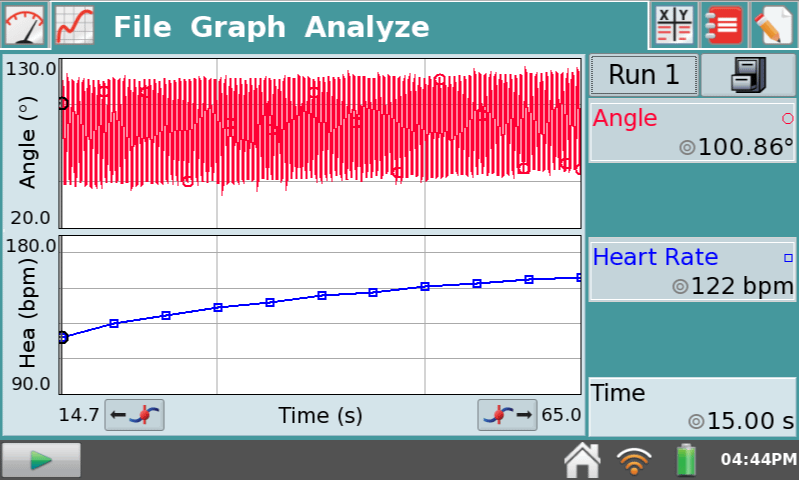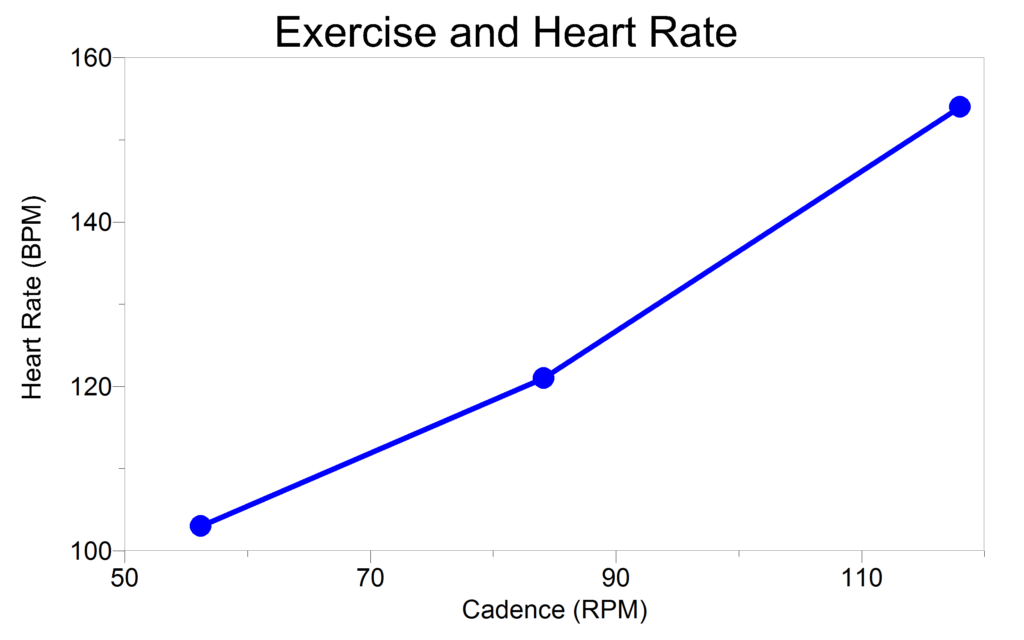John Melville, our Biology Staff Scientist, has found that our Goniometer and Exercise Heart Rate Monitor are great sensors for investigating the effect that exercise has on the heart. As shown in the data below, students can easily use LabQuest with an Exercise Heart Rate Monitor and a Goniometer to record both heart rate and joint angle data from the knee while cycling.
With this in mind, we have developed two new experiments, “Heart Rate and Exercise (Cycling)” and “Heart Rate and Exercise (Running).” In each experiment, the student observes how the heart responds to the increased metabolic demand of the leg muscles as running or cycling speed is increased. The Goniometer is attached to the leg of a subject and the dynamic range of motion (ROM) of the knee is recorded while running or cycling. An Exercise Heart Rate Monitor is used to monitor the subject’s heart rate. As shown in the data below, John’s heart rate increases as cycling cadence increases.
For these very active experiments, the Exercise Heart Rate Monitor’s chest belt works better than the hand grips from the Hand-Grip Heart Rate Monitor. If you have a Hand-Grip Heart Rate Monitor, just purchase a Chest Belt Transmitter to perform both exercises. For more info email physiology@vernier.com


